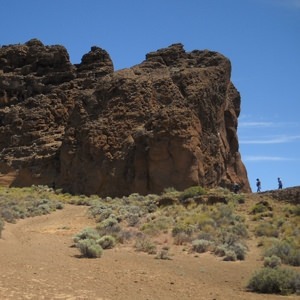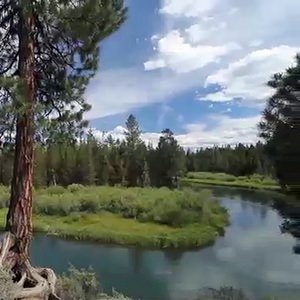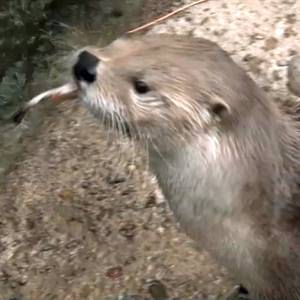I am always on the lookout for places that offer “touchable history,” where interesting, unique lessons can teach me more about the place that I call home.
This week, we get in touch with a real historic hotbed across a landscape that was once a zone of volcanic eruptions, magma flows and the birthplace of mountains.
Oregon’s high desert is vast, timeless and remote — where distances are great and people are few and where the only outpost for miles. It’s unlike any state park you’ve ever seen.
At Fort Rock State Natural Area, you won’t find many people, phones, radios or TVs, and many of the people who visit the distant site like it that way.
“I saw it through the forest from a distance and thought, ‘Is that it? Is that it?” says Eugene resident David Foster. He traveled to Fort Rock, camera in hand, to explore a unique chapter in Oregon geologic history far away from the city’s hub-bub and noise.
“Is there anything better than this?” he asks with a chuckle. “I don’t think so! I mean, with imagination, you can see the waves breaking and weathering the rocks over tens of thousands of years. This was a very different place back then!”
Foster is right! Fort Rock isn’t an old military outpost but an ancient volcanic eruption. Fort Rock was a small basaltic vent that formed a tuff ring when it first exploded to the surface — and under the water — 100,000 years ago.
You see, the surrounding landscape was once an expansive inland freshwater sea — up to three hundred feet deep — that resulted from melting glaciers that reached into the area.
“It’s a landmark,” says Oregon State Park Manager Joe Wanamaker. ”You can see for miles around and it’s very distinct; almost a perfect circle with one side missing.”
Over thousands of years, wave action of the lake eroded the tuff ring’s southwest wall away and left terraces along the front and insides of Fort Rock.
Most park visitors enjoy exploring the expansive caldera, searching for petroglyphs among the towering the rock walls.
“There is a short 1.2-mile-loop trail that goes through the entire caldera,” says Wanamaker. There are pretty spectacular formations where you can actually see the magma’s gas pockets, plus the lake sediment under your feet is quite sandy and offers easy walking — it’s all pretty neat.”
If you want to ramble for a longer stay, check in at LaPine State Park, 45 minutes away along State Highway 97. The huge parkland offers rustic cabins for rent, plus full hook ups for trailers or RVs.
“The LaPine State Park location is central to so many recreation activities,” says Wanamaker. “It’s a great place to come in the fall! The weather is still good and warm in the day and not too cold at night, and typically the crowds have gone away. The High Desert Museum is nearby, plus the Deschutes River winds through our parkland.”
Twenty miles to the north, on the grounds of the High Desert Museum, stroll over to the newest addition to the museum’s grounds where you can meet two river otters, Brook and Rogue, at play.
The otters are visitor favorites, according to museum wildlife curator Alysia Wolf, “They’re incredibly charismatic! That adorable face draws people in and then the playful behavior behind it is definitely the hook.”
The new otter exhibit is a remodel of an exhibit that was built in the early 1980’s. The project took seven months to complete at a price of nearly $200,000. Wolf adds that it’s the perfect venue for youngsters who can lend a hand and learn more about wildlife too.
“It’s one of my favorite parts of the day because it opens up with kids asking question after question,” says Wolf. “They have a lot of fun, even lend a hand at otter feeding time. They’re having a lot of fun and learning at the same time — that’s the best way to do it I think.”
The High Desert Museum is a fine fit for families who want to learn more about the vast region east of the Cascades — in fact, indoors at the museum is one of the most intriguing exhibits, called “The Buzz Saw Sharks of Long Ago!”
The exhibit showcases recent discoveries of fossils that show a very different shark species, one that reached up to 40 feet in length, weighed several thousand pounds and had the most unusual jaw and teeth.
Roughly 290 million years ago, a genus of a very distinctive shark-like fish, the Helicoprion, swam in the ancient sea that once covered much of the region.
Alaskan artist Ray Troll refers to this creature as the “weirdest, coolest shark of all time,” and for good reason. The Helicoprion, whose name means “spiral saw,” owned what is arguably the most unusual set of teeth in the animal kingdom.
What is the high desert connection?
According to museum spokesperson Damian Fagan, the shark species fossils were discovered in the desert: “These fossils of the buzz-saw shark, or helicoprian, were found in Idaho and New Mexico that are parts of the high desert region. The desert was covered by ocean 300 million years ago, so sharks were right at home here.”
The museum spreads across 150 acres, filled with exhibits and demonstrations. A mile-long trail goes through 25 acres of trail-side exhibits, including a trout stream, otter ponds, porcupine dens and interpretive displays of frontier life and industry. You’ll love seeing the many wildlife species on display at the museum too.
Hawks, eagles and turkey vultures are frequently seen soaring over the wide expanse of the desert, but at the museum you can see them all close at hand and learn about their special adaptations for survival.
Education and recreation — it’s all at the High Desert Museum and so easy to find on your next visit to Central Oregon’s hotbed of history.



